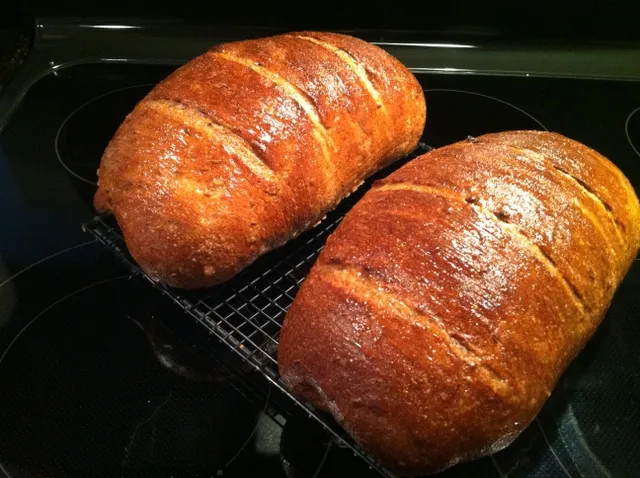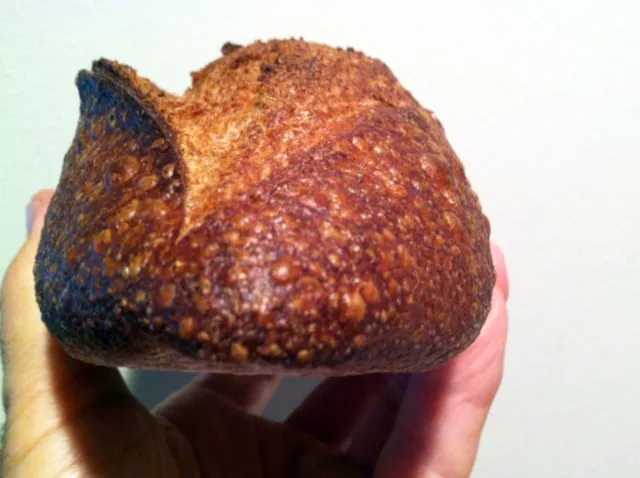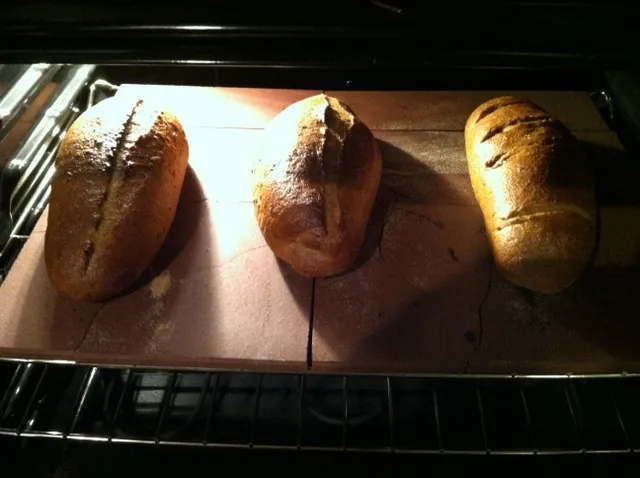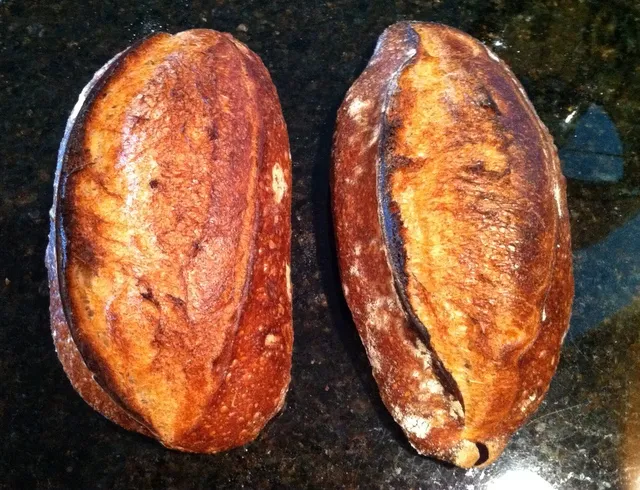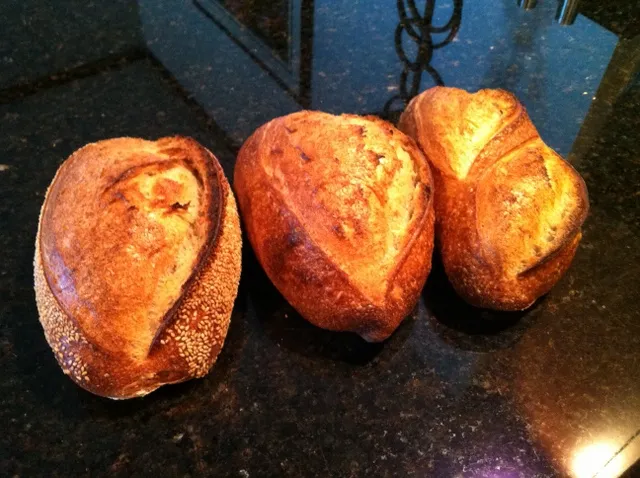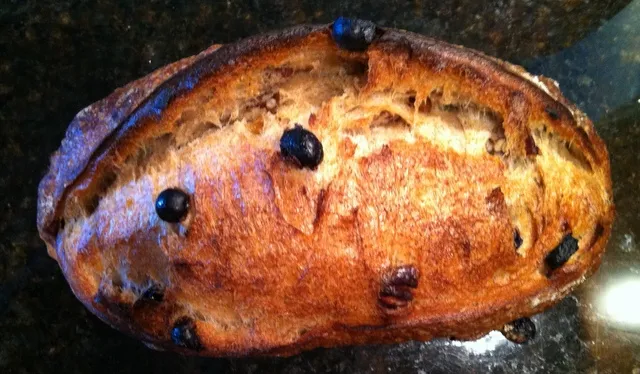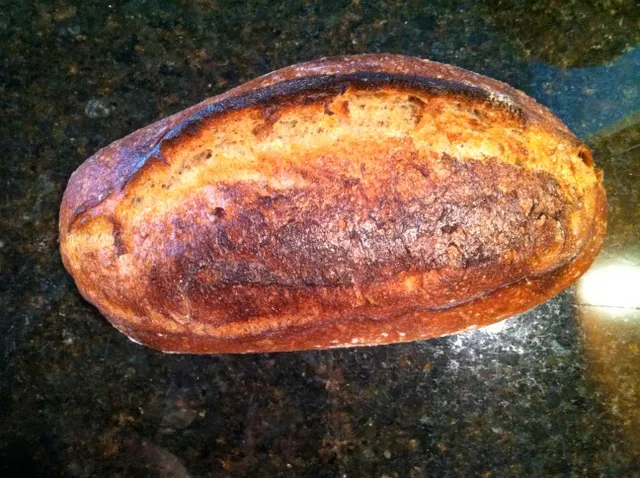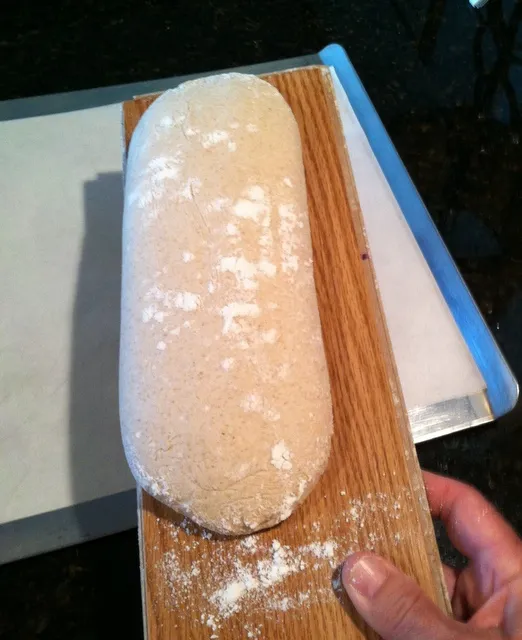Pain au Levain w/mixed SD starters
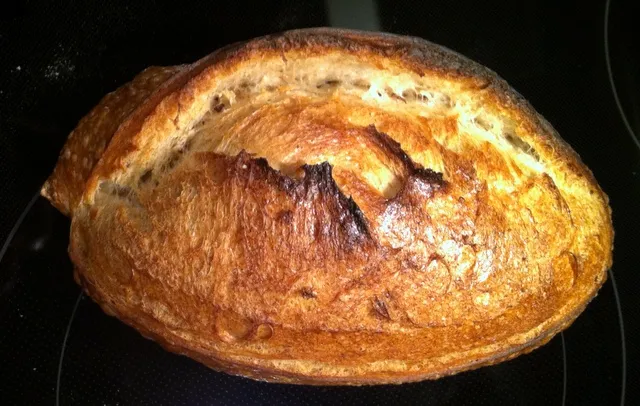
Recently I began to try out a rye levain breads, and having leftover rye starter I figured I'd continue on that riff. I cleave off a bit at a time from the remaining rye starter ball and still have a few bakes left in the slowly diminishing ball. For the liquid levain, I used a recently refreshed stiff levain stater.
